Crusty Walnut Wheat Bread Recipe
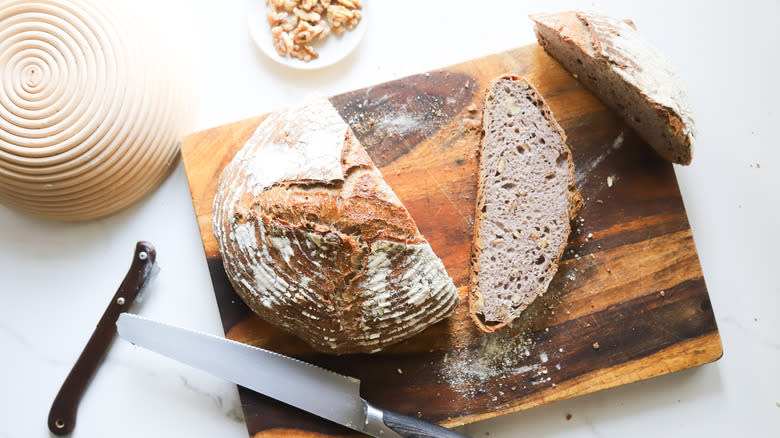
Sourdough bread is known for its distinct, tangy flavor, crisp crust, and chewy interior. The natural fermentation process aids in the breakdown of gluten, making it easier to digest. It also enhances the availability of nutrients. For those new to the art of bread-making, sourdough can seem daunting -- maintaining the starter, developing the gluten matrix, getting the fermentation just right. Even if you're a novice baker, have no fear. With a few simple adjustments, you can make a delightful and delicious sourdough bread.
By incorporating a bit of instant yeast into the dough, the fermentation process becomes more predictable and less time-consuming. Additionally, using a stand mixer can simplify the kneading process, ensuring a consistent texture without the need for expert hand techniques. Adding a handful of walnuts introduces a delightful crunch and a nutty flavor that complements the sourdough's tanginess. This walnut-infused sourdough bread is versatile and oh-so tasty. Spread it with a pat of butter or use it to elevate your sandwich game, adding a gourmet twist to even the simplest fillings. The robust texture of this bread holds up well to a variety of toppings, making it a perfect canvas for culinary creativity.
Read more: 11 Cleaning Tips For Keeping Your Oven Spotless
Gather The Ingredients For Crusty Walnut Wheat Bread

In order to make this sourdough bread, you need a healthy, ripe sourdough starter. If you don't have one in your kitchen already, you can order one online, buy one from a local bakery, or make it yourself with this foolproof starter recipe. We're also going to be using instant yeast to help us a bit more with the heavy lifting and rising. This also cuts down on the amount of kneading required and makes this recipe easier for a novice baker.
The main ingredients in the bread are going to be a mix of high-protein, all-purpose flour and white whole wheat flour. If you can't find a good all-purpose flour with a high protein content, look for bread flour. You will need a higher protein content in the flour or the bread will turn out flat and dense. Along with the flour, we'll add vegetable oil for texture, salt for flavor, and water to hydrate the dough. The final ingredient is some chopped walnuts, which add a nice flavor and texture (but can be left out or swapped for another nut).
Step 1: Mix The Dough
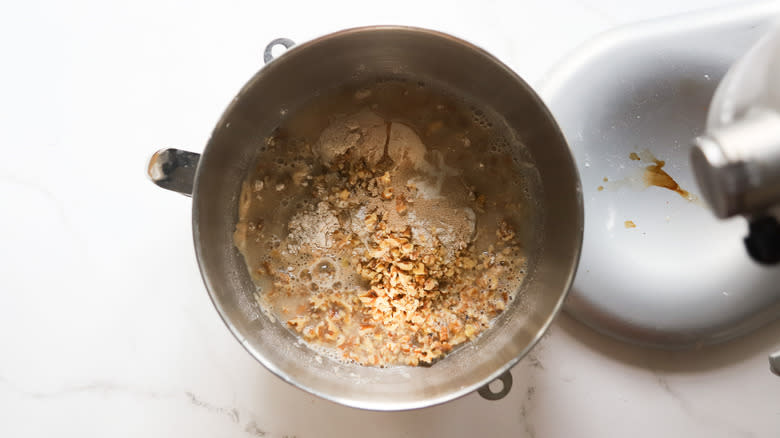
In the bowl of a stand mixer, combine all ingredients.
Step 2: Mix On Low

Mix on low speed for 10 minutes. The dough should be smooth, slightly tacky, and stretchy.
Step 3: Let The Dough Rest And Rise
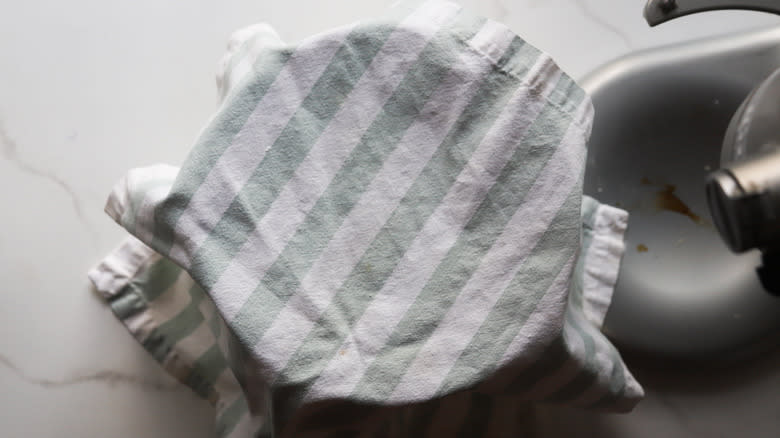
Cover the bowl and let it rest in the refrigerator overnight, or for about 12 hours. The dough should be firm, aerated, and increased in volume by about 60%.
Step 4: Turn The Dough Out
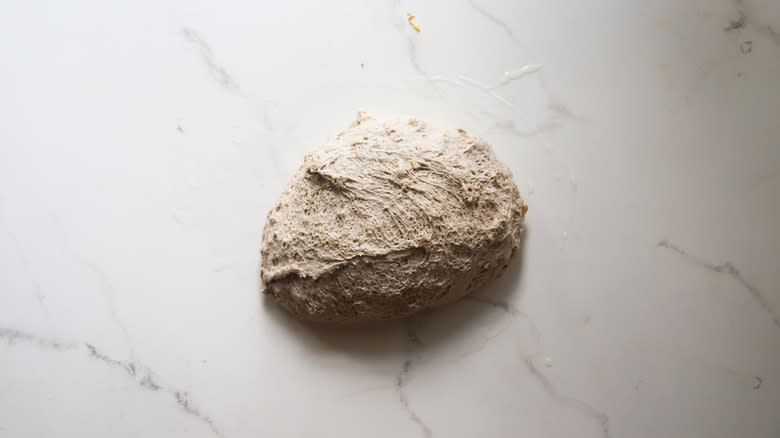
Turn the dough onto a lightly oiled cutting board.
Step 5: Fold The Dough

Fold the dough gently a few times and shape into a round.
Step 6: Transfer To A Proofing Basket
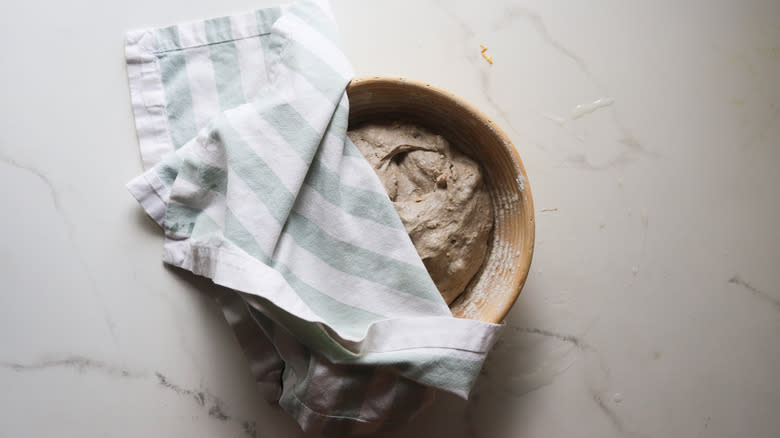
Transfer to a floured brotform or cloth-covered bowl.
Step 7: Cover And Rest Again

Cover and rest for an additional 1–1 ½ hours.
Step 8: Preheat Oven And Dutch Oven
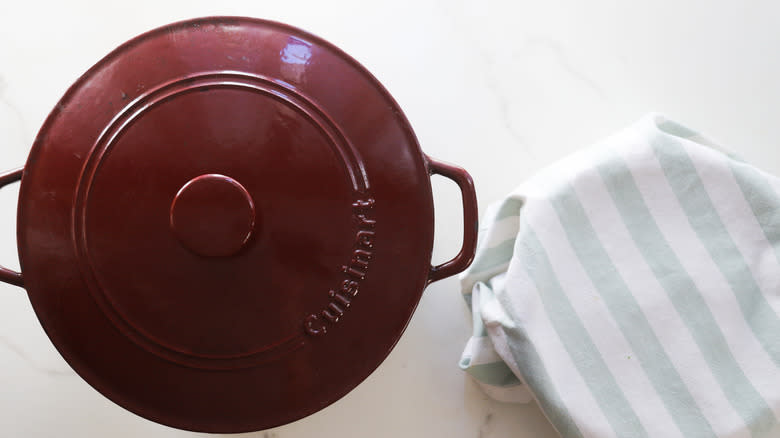
Preheat the oven to 450 F 30 minutes prior to baking and place a large Dutch oven in the oven to preheat.
Step 9: Slash The Dough
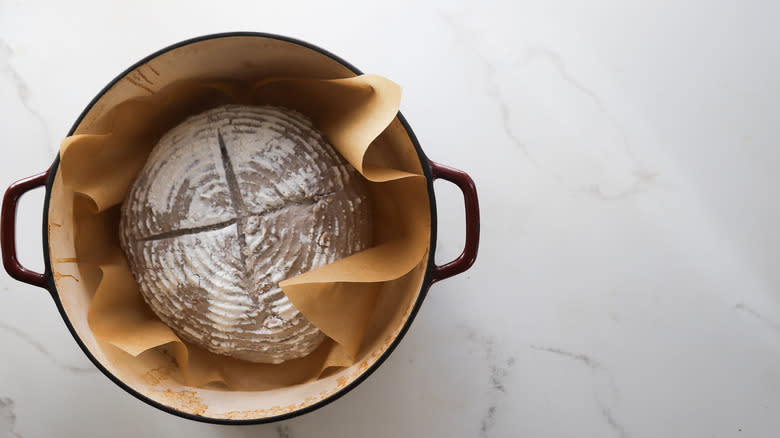
Transfer the dough to the preheated Dutch oven and make a 4-inch slash on top using a sharp knife or bread lame.
Step 10: Bake Covered

Cover the Dutch oven and bake until the dough is pale, shiny, and visibly risen — about 35 minutes.
Step 11: Remove Lid And Finish Baking

Remove the lid and continue baking until the loaf reaches a deep, golden brown and the internal temperature reaches 205 F, about 10–15 more minutes.
Step 12: Rest Before Serving

Let cool for 1 hour before slicing and serving.
Can I Substitute The Whole Wheat Flour For More White Flour In This Walnut Wheat Bread?
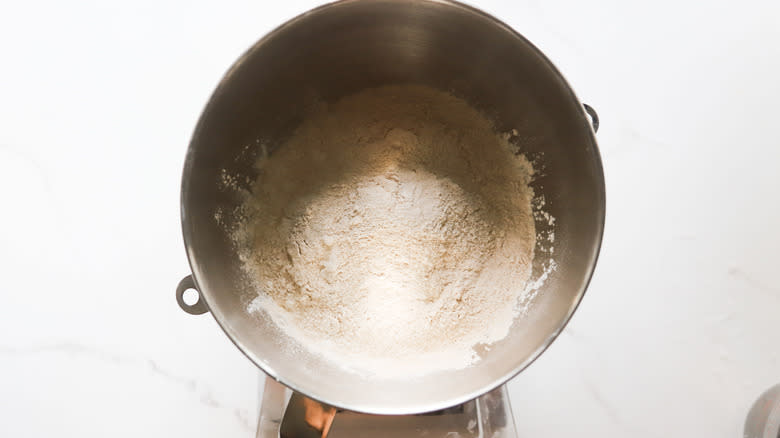
Yes, you can substitute all-purpose flour for whole wheat flour in sourdough whole wheat walnut bread, but it will impact the texture and flavor of the bread. Whole wheat flour adds a nutty and rich flavor, along with a denser, heartier texture, which complements the walnuts. All-purpose flour, on the other hand, will make the bread lighter and softer with a milder taste. If you do choose to substitute, keep in mind the hydration levels. Whole wheat flour absorbs more water than all-purpose flour, so you may need to adjust the water content in your recipe.
A general rule is to reduce the water by about 5–10% when using all-purpose flour in place of whole wheat flour. Also, the fermentation time may vary slightly, as whole wheat flour ferments faster than all-purpose flour. To ensure success, observe the dough's consistency and rise, making adjustments as needed.
How Can I Store Walnut Wheat Bread Bread To Keep It Fresh?

Storing sourdough whole wheat walnut bread properly is crucial to maintaining its freshness and flavor. First, let the bread cool completely after baking. Slicing into warm bread can release moisture and lead to a gummy texture. Once cooled, store the bread in a bread box or a paper bag. These methods allow the bread to breathe, maintaining its crusty exterior while preventing it from drying out too quickly. Avoid plastic bags, which trap moisture and can make the crust soggy.
For longer storage, you can slice the bread and freeze it. Wrap individual slices in parchment paper and place them in a freezer-safe bag. This method lets you thaw and toast individual slices as needed. When defrosting, either let the slices come to room temperature naturally or toast them directly from frozen. Proper storage will keep your sourdough whole wheat walnut bread fresh and delicious for several days.
Crusty Walnut Wheat Bread Recipe

Prep Time: 14hCook Time: 45mYield: 8 ServingsIngredients
2 cups (400 grams) ripe sourdough starter
1 ½ cups (200 grams) bread flour or white unbleached flour (11–13% protein content)
1 ½ cups (210 grams) white whole wheat flour
1 cup (110 grams) chopped walnuts
1 ½ tablespoons vegetable oil
2 teaspoons salt
1 teaspoon instant yeast
1 cup + 2 tablespoons (236 grams) lukewarm water
Directions
In the bowl of a stand mixer, combine all ingredients.
Mix on low speed for 10 minutes. The dough should be smooth, slightly tacky, and stretchy.
Cover the bowl and let it rest in the refrigerator overnight, or for about 12 hours. The dough should be firm, aerated, and increased in volume by about 60%.
Turn the dough onto a lightly oiled cutting board.
Fold the dough gently a few times and shape into a round.
Transfer to a floured brotform or cloth-covered bowl.
Cover and rest for an additional 1–1 ½ hours.
Preheat the oven to 450 F 30 minutes prior to baking and place a large Dutch oven in the oven to preheat.
Transfer the dough to the preheated Dutch oven and make a 4-inch slash on top using a sharp knife or bread lame.
Cover the Dutch oven and bake until the dough is pale, shiny, and visibly risen — about 35 minutes.
Remove the lid and continue baking until the loaf reaches a deep, golden brown and the internal temperature reaches 205 F, about 10–15 more minutes.
Let cool for 1 hour before slicing and serving.
Read the original article on Tasting Table.

